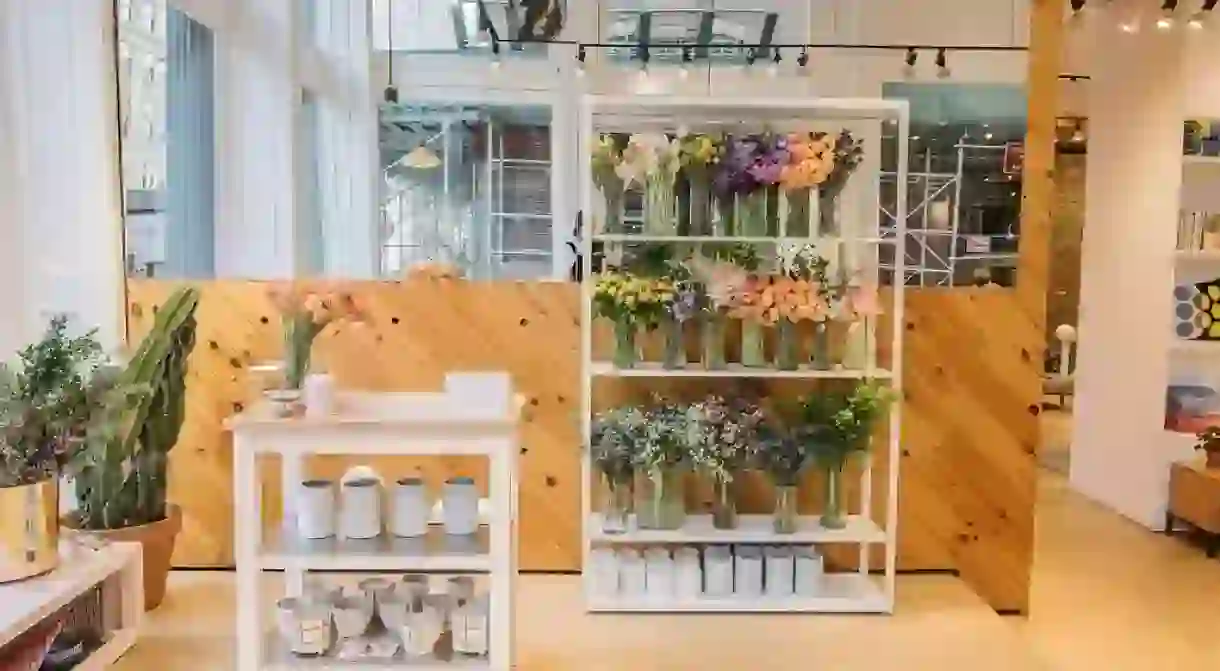There’s a New Apartment in NYC Where Everything Is For Sale

A dreamy, shoppable apartment came to Tribeca just in time for New York Design Week—but it’s also here to stay.

Since the dawn of online retail, most people are used to buying their homewares and furniture direct from sellers online, relying heavily on consumer reviews to aid their purchase decisions. But unlike electronics and tech-heavy products, good reviews won’t offer the actual “experience” of the item, and definitely don’t capture the allure of good design.
That’s where the ingenuity of a new business model, led by co-founder and COO Adam Bent, comes into play. “Home” by thisopenspace, an entirely shoppable “apartment” opened this month in Tribeca, and brings together some of the most popular home goods brands that are normally reserved for online purchase only—all under one brick-and-mortar space.

On the store’s opening night earlier in May, the “apartment” was packed with design-lovers from all over the city, eager to experience the products and space for themselves. Unlike many trade shows during New York Design Week, where myriad isolated items are displayed in showroom-like settings, Home highlights the livability factor of each product. For instance, Big Chill, a retro-style refrigerator and oven system in a lime green-yellow hue, was demurely featured in Home’s kitchen area, along with W&P’s elderflower cocktail spritz and pourover coffee by Dripkit. In Common With’s customizable furniture options dotted the living area, while Devialet’s high-tech standalone speaker created the evening’s ambiance.
Direct-to-consumer brands range from well-known furniture makers like Joybird to local, boutique style companies like Flower Bodega. Customers can peruse the 4,000 square foot apartment-style shop and find a little bit of everything: bedding, textiles, artwork, kitchenware, cocktail mixers, sofas, and more. By incorporating local artisans and products in the mix, like Brian Giniewski’s “drippy” hand-painted ceramics, featuring an on-trend spring color palette, the shopping experience becomes further anchored in the Tribeca neighborhood.

Adam Bent told Culture Trip he expects to introduce new selections every few weeks, so the store will always be in a state of flux. Perhaps Home’s biggest strength, beyond bringing direct-to-consumer brands to a physical store, is the rotating hyper-curation. Hyper-curation, or more specifically, presenting one item/brand in each “home area” rather than ten, lessens not only the disconnect consumers can feel from shopping online, but also the anxiety of simply having all those choices.
And it seems shoppable apartments are on the rise. Sight Unseen recently highlighted online retailer Radnor’s new penthouse exhibition for New York Design Week, calling it a model that “proves shoppable interiors are officially a thing.” In the article, journalist Sean Santiago, referring to their brick-and-mortar experiment, highlights the appeal: “Domestic space is the latest frontier in a super-saturated market that’s short on time and long on constant visual stimuli. The logic goes, if you can’t bring your audience to the shop, bring the shop to them—take your collection of semi-unfamiliar things and put them into an environment that feels both safe and familiar.” Other on-trend, shoppable apartments include The Apartment by The Line, which has stores in New York City and Los Angeles.

While some big box retailers like Macy’s and IKEA are turning to VR and AR technology to showcase their furniture in consumer’s apartments, nothing quite replaces the tactile experience of testing it out in person. A VR headset can help you visualize aplace or fit a couch in your living space, but it can’t offer the physical sensations of actually sinking into it.
According to research from Statista, Americans spent over $360 billion dollars buying physical items online in 2016, and that figure is expected to surpass $603 billion in 2021. But Statista also notes that the U.S. market ranks behind several countries when it comes to e-commerce sales vs total retail sales: Only 8.1 percent of retail sales occurred online in the United States. The online retail market will continue to grow, there’s still a need to experience products in person, particularly when it comes to homewares.














